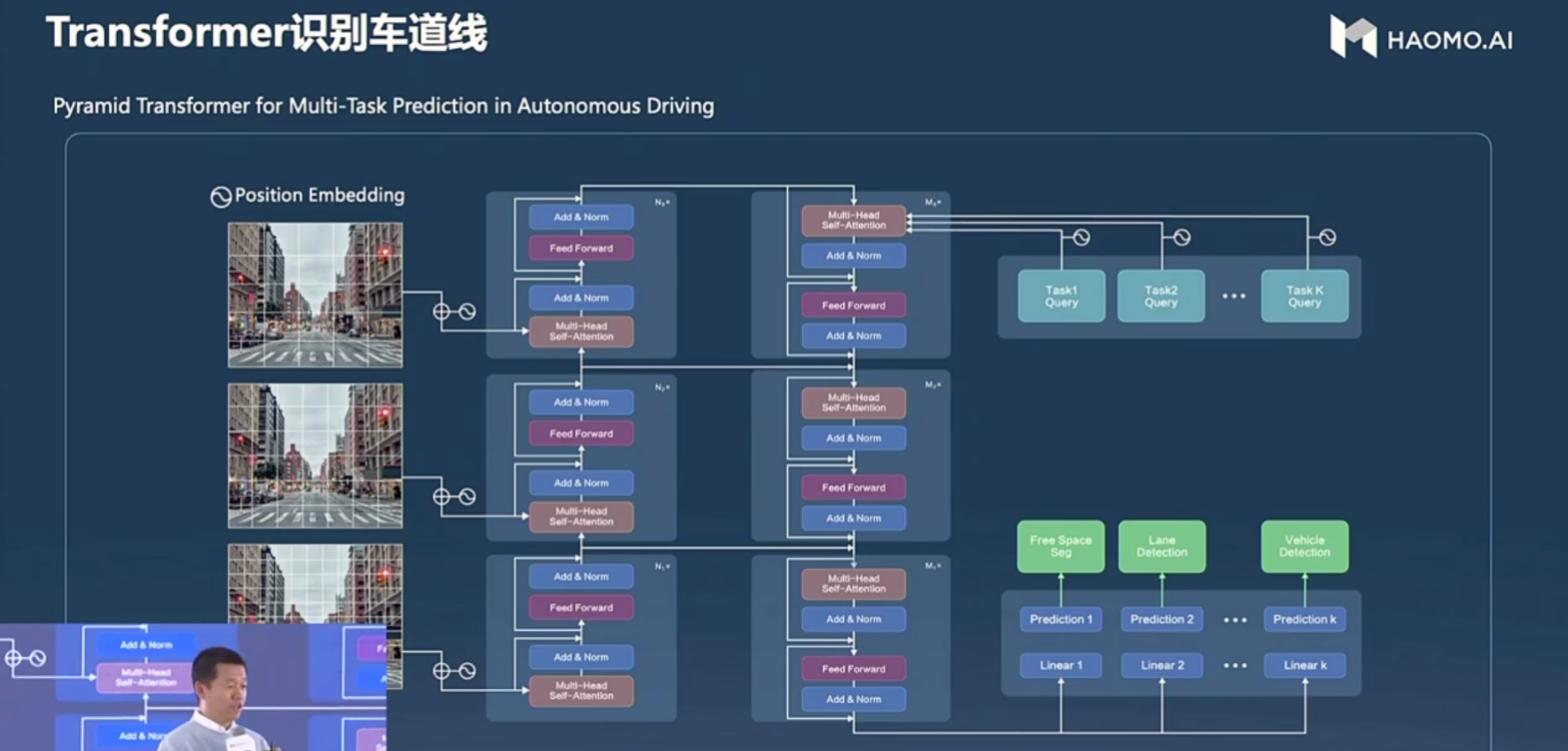This afternoon, HAOMO Zhixing, a smart driving company under Great Wall Motors, held the HAOMO AI Day technical conference. The event provided a great deal of information on professional intelligent driving technologies. The highlight of the conference was the release of the NOH City Navigation Assisted Driving by HAOMO. This system will be put into production on several brands under the Great Wall Group in a short time.
NOH City Navigation Assisted Driving by HAOMO
HAOMO announced that it will become the first domestic manufacturer to produce city navigation-assisted driving on a large scale, covering over 100 cities and including driving on highways, open city roads, urban expressways, and parking lots. The system will be installed on vehicles of various brands under Great Wall Motors, such as Haval, Wey Peugeot, and Tank.
The hardware of HAOMO NOH located on Hpilot3.0 has the following configurations:
- 2 LiDARs
- 5 mm-wave radars
- 8-camera surround view ADAS vision
- 12 ultrasound radars
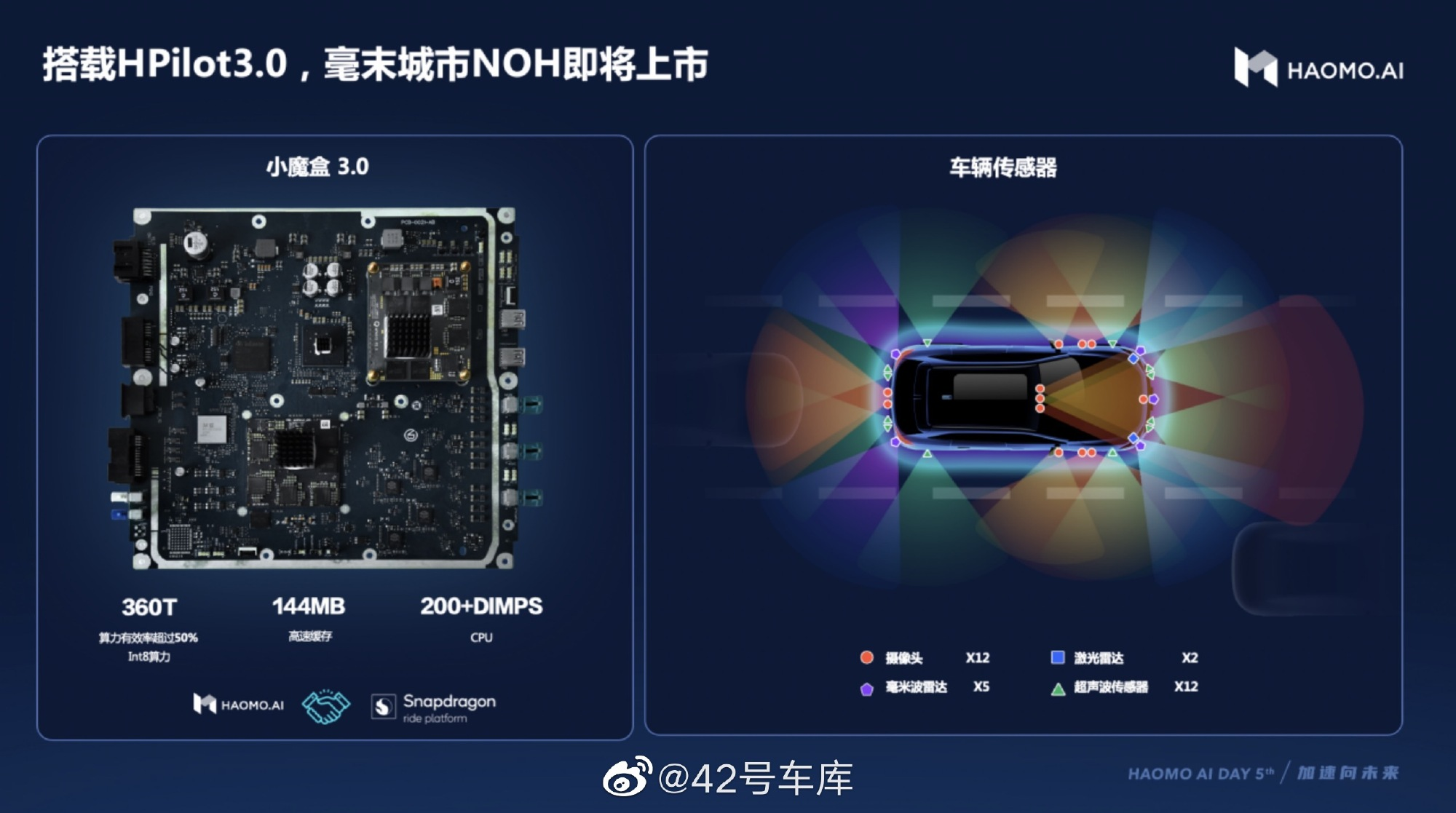
The chip for assisted driving is the “Little Magic Box 3.0” jointly developed by HAOMO and Qualcomm, with an AI computing power of 360 TOPS, an integer operation capability of over 200 DIMPS for the CPU, and a cache speed of 144 MPS.
During the conference, the HAOMO official stated that the NOH City system is not inferior in performance to Tesla in China:
- Intersection passing rate of 70%
- Lane change success rate of 90%
- Traffic handling capability at level 4
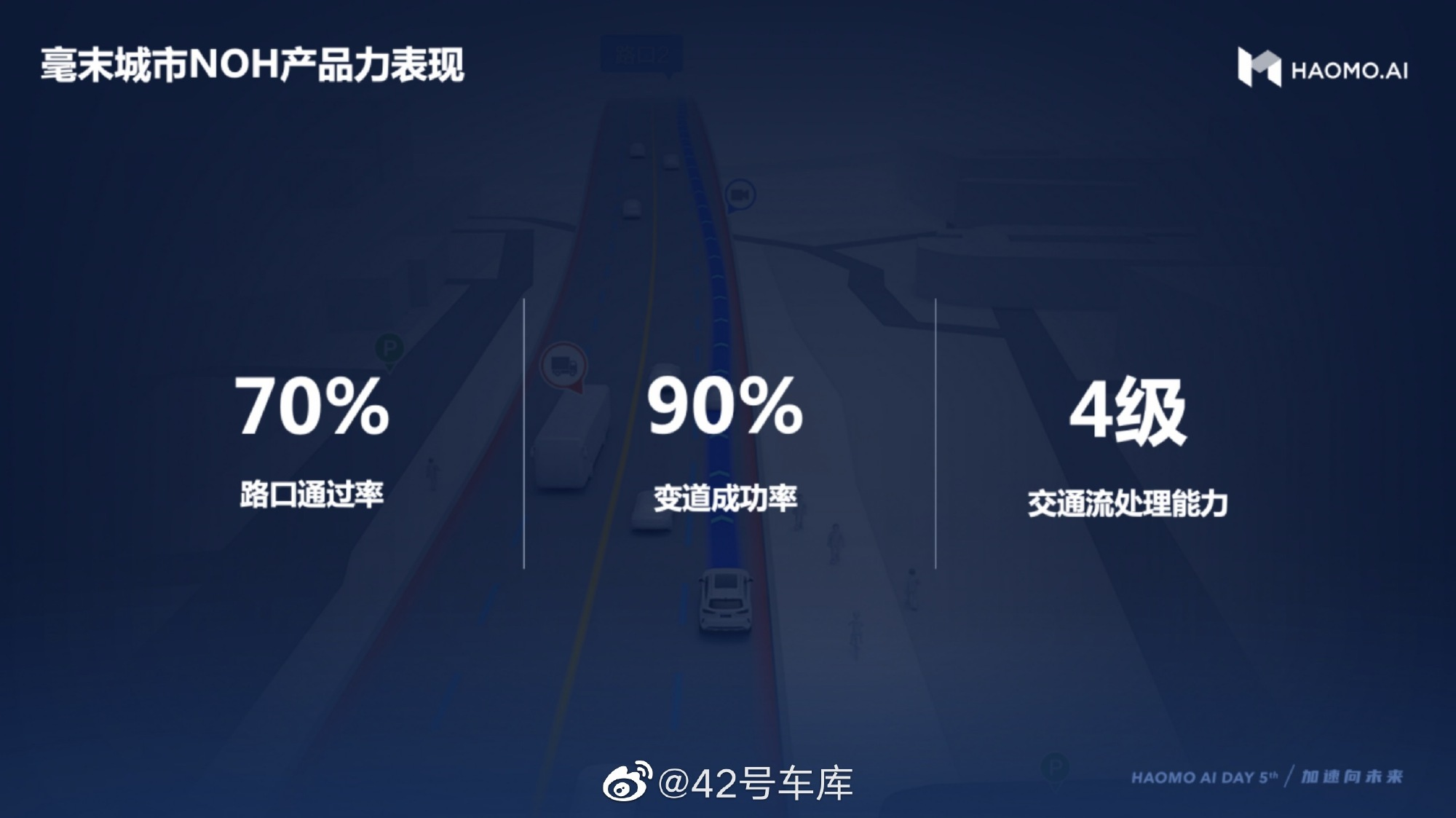
Technical Highlights of HAOMO AI System
HAOMO’s assisted driving software system network is officially called “Mana”, targeting city navigation-assisted driving for many developments and training in perception, such as the red and green light scenario. Simulation scenarios often have deviations from real scenarios, and HAOMO’s approach is to use domain generalization in transfer learning to compensate for missing samples in real scenarios and reduce the feature space probability distribution differences between the two.
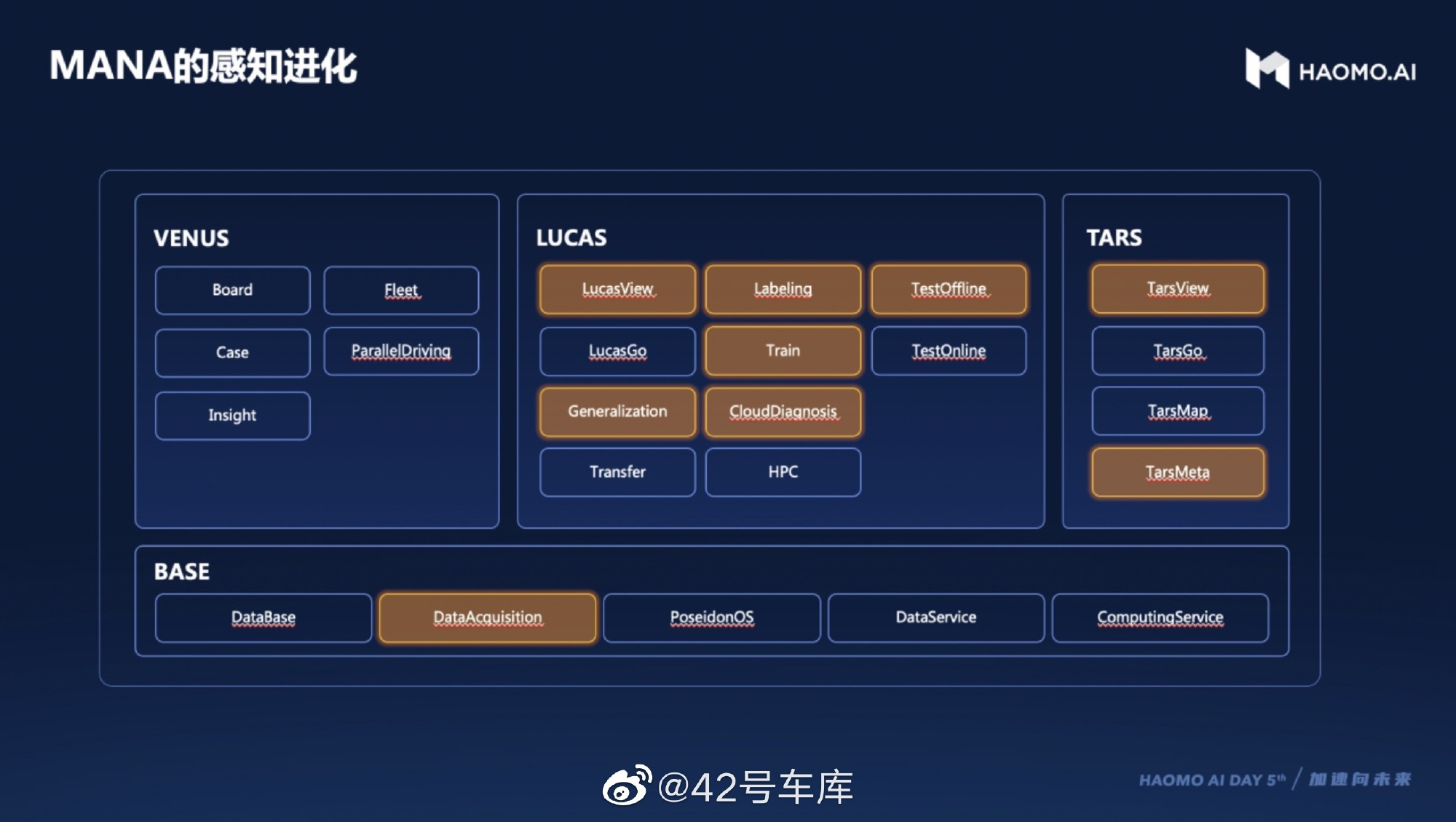
Another technical highlight is the Transformer, which converts two-dimensional camera images into three-dimensional perception data. The official exhibition introduced three technical advantages of Transformer:
- It can better utilize big data, and its performance will steadily increase with the increase of parameters in the engineering architecture.1. The Attention architecture, which divides perception priority for different features, is very suitable for multi-sensor fusion, providing a time-series fusion in the abstract space, having higher feature matching capability, and more stable objects;
- Transformer can output 3D results directly, instead of obtaining 2D results first, and then reconstructing them into 3D.
The specific effects reflected in the lane recognition scenario are as follows:
- Lane recognition has less jitter;
- Vertical long-distance recognition has lower error;
- Robustness is higher when encountering road undulation;
- The field of view is better and the response is faster under multiple camera combinations.
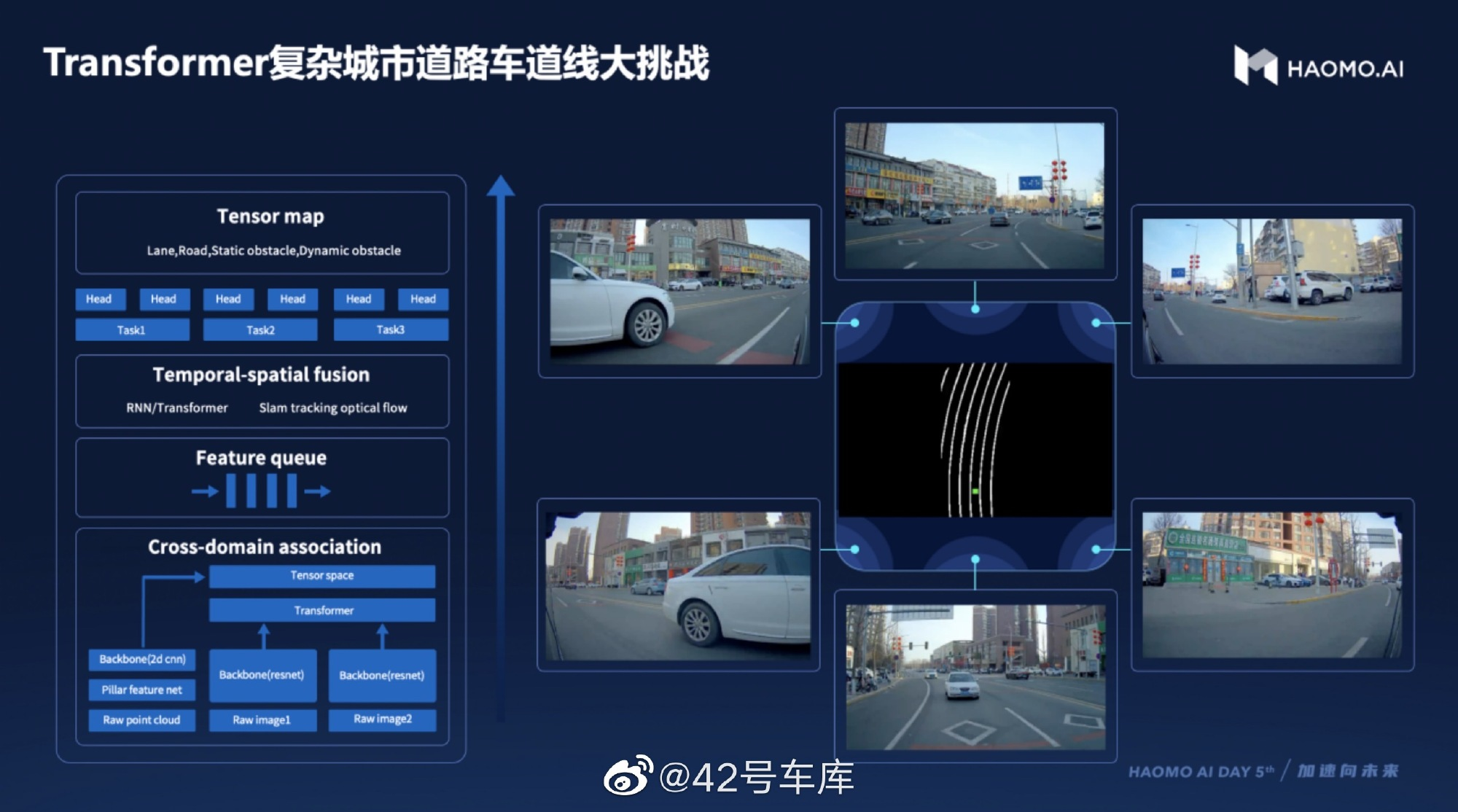
We will not go into detail about other projects here. More comprehensive technical content can be found on our official website or app for the playback of the press conference, and we will produce corresponding in-depth content in the future.
Mogauto’s automatic data labeling and supercomputing center
Mogauto stated at the conference that data labeling is currently an important direction for perception development. Automatic labeling is a trend for improving efficiency and reducing costs, and Mogauto has achieved 80% automation.
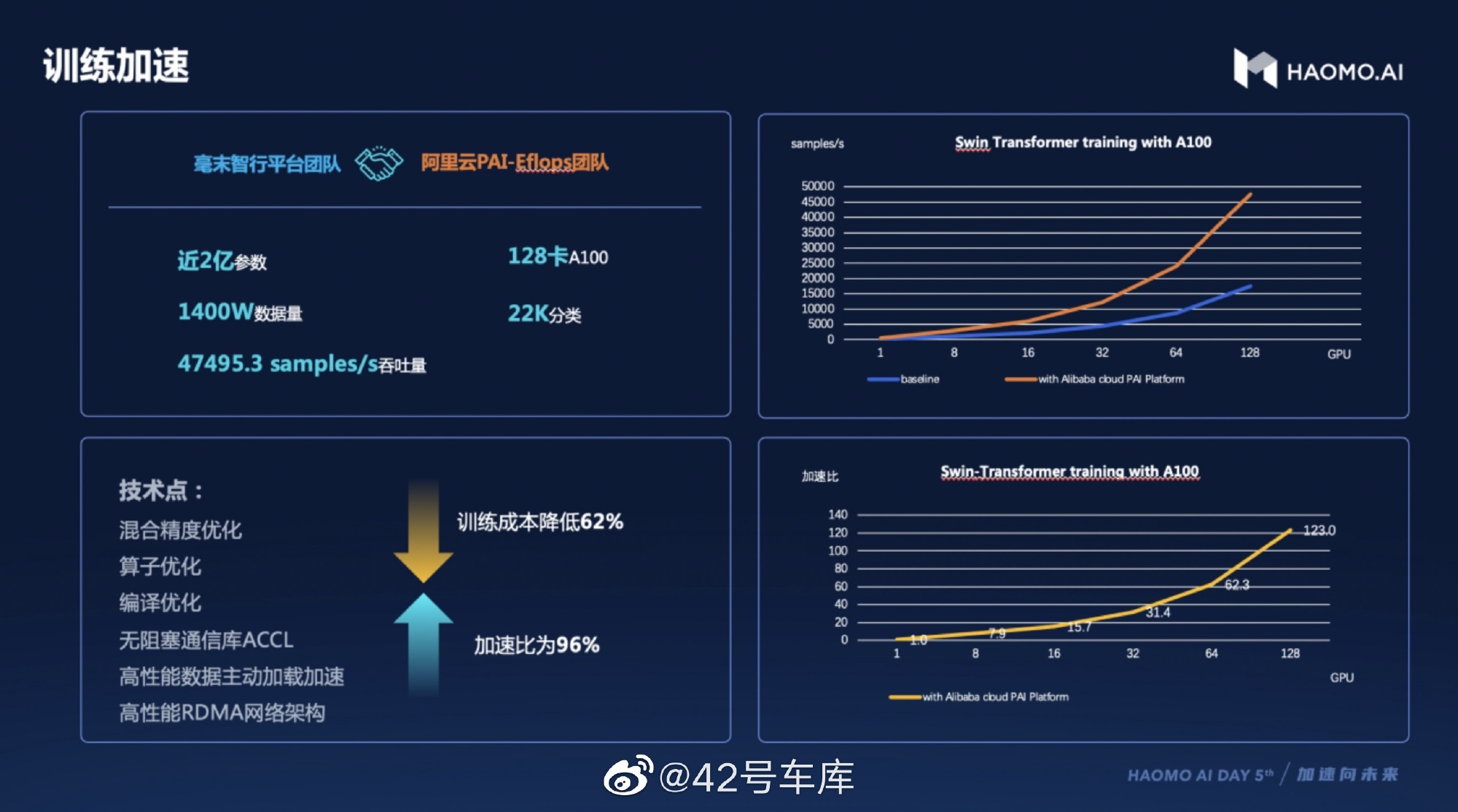
The supercomputing center that Mogauto uses for training software and algorithms is developed in collaboration with the Alibaba PAI-EFLOPS team, using a 128-card A100 cluster with a throughput of over 40,000 samples per second.
After watching the conference, it has to be said that Mogauto’s actions this time are quite surprising. The topic of intelligent driving was mostly dominated by new forces, Huawei, and Tesla. The impression that traditional brands give people in this regard is that their actions are slow and they do not attach importance to it.
At this conference, Mogauto gave a detailed explanation of what they have done, what they will do, and how they will do it in the field of intelligent driving. The style of the conference does feel a bit like Tesla.
The impact of the epidemic is still continuing, but the competition in the Chinese market for intelligent driving this year is foreseeable to be very fierce. Mogauto unexpectedly aims to be the first company to produce large-scale city navigation-assisted driving, before XPeng and other companies. Objectively speaking, the expectations given by the current information are not low, but the actual capabilities and experiences still need to be judged by everyone after the formal delivery.
This article is a translation by ChatGPT of a Chinese report from 42HOW. If you have any questions about it, please email bd@42how.com.
